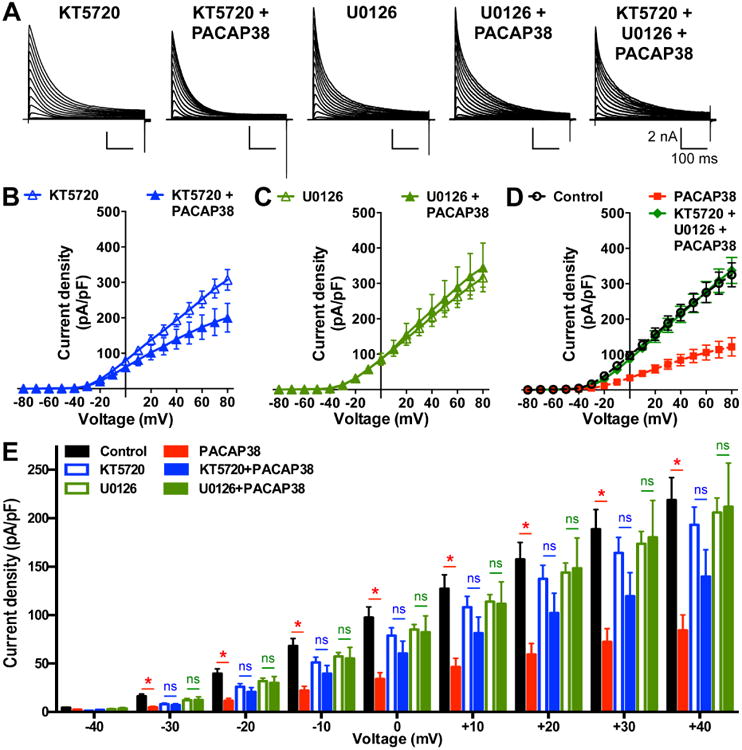Figure 9.

PACAP38-mediated reduction in Kv4.2 current density is dependent on the activity of both PKA and ERK1/2. A, Representative traces of whole-cell voltage-clamp recordings from HEK293T cells transfected with plasmids containing Kv4.2, KChlP2 and PAC1-Null cDNAs, with PKA inhibitor KT5720 alone (1 μM), PACAP38 (100 nM) + (KT5720, 1 μM), ERK1/2 inhibitor U0126 (1 μM) alone, PACAP38 (100 nM) + (U0126, 1 μM), and PACAP38 (100 nM) + KT5720 (1 μM) + U0126 (1 μM) for 20 min. Cells were step-depolarized from -100 mV to +80 mV for 500 ms with +10 mV increments from a holding potential of -100 mV. B-D, Current density – voltage plots of Kv4.2 currents from cells with various drug treatments, as shown in panel A. Data are presented as mean ± SEM [n = 10 and 13 cells for KT5720 and KT5720 + PACAP38, respectively (B); 10 and 12 cells for U0126 and U0126 + PACAP38, respectively (C); and 11 cells for KT5720 + U0126 + PACAP38 (D) groups]. Current density data for control and 20 min PACAP38 treatment conditions from Fig. 7B are re-plotted in panel D as dotted lines for comparison. E, Comparative plot of Kv4.2 current densities calculated from panels B-C and Fig. 7B, showing indicated peptide/drug effects at physiologically-relevant voltages (-40 mV to +40 mV). ns: not significantly different, and * denotes p<0.05, significantly different compared to respective control or KT5720 alone or U0126 alone treatment conditions (Unpaired Student's t-test).
